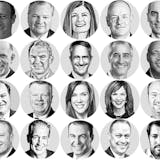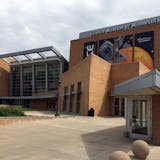Arthur Valdez knows how to make things go fast.
For 16 years, he helped Amazon set the bar in retail for getting packages to customers at warp speed. Now he's doing the same at Target Corp., helping it play catch-up as it modernizes its systems built around stores to adapt to the faster-paced online shopping world.
A year into his role as Target's chief supply chain and logistics officer, Valdez is overseeing a major overhaul of Target's network of 40 warehouses, 10,000 trailer trucks and related inventory management systems. The goal is speed, efficiency and accuracy. The effort is a key part of Target's strategic road map as it looks to reverse sliding sales and pinched profit margins.
If he can get it right, it could mean not only reducing costs for Target but also getting online orders into customers' hands within hours, ensuring customers don't encounter empty shelves as often and stepping on the gas in opening smaller stores in dense urban centers where backroom space is much more limited.
In his first sit-down interview since arriving at the Minneapolis-based retailer, Valdez likened the traditional supply chain for brick-and-mortar retailers to a slow-moving elephant, which transports large amounts of products at one time. His task, he said, is to help transform Target into a gazelle that can more swiftly move smaller shipments, down to individual items, to where they are needed.
"Speed matters," he said. "We've got to be faster than the elephant. … Where I spend my time today is helping problem-solve how to become the gazelle."
Some of the fruits of his labor are already beginning to show with a series of tests that Target plans to quickly scale if successful.
The retailer is soon launching a pilot program for next-day delivery of household essentials called Target Restock in the Twin Cities. Next month, it will test a same-day delivery service for in-store purchases from its recently opened Manhattan store in Tribeca. And this fall, Target will try out its own curbside pickup service for online orders when it opens its next-generation prototype store outside of Houston.


